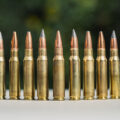You’ve harvested a slob knocker of a buck and you’re running high on excitement and adrenaline. After snapping a few pictures, you text your buddies, only to have them text back “What’s he score?” Although you’ll need an official score by a certified measurer to get in the record books, scoring your own buck is […]
You’ve harvested a slob knocker of a buck and you’re running high on excitement and adrenaline. After snapping a few pictures, you text your buddies, only to have them text back “What’s he score?”

Although you’ll need an official score by a certified measurer to get in the record books, scoring your own buck is fun and rewarding. Plus, a gross score will help secure your bragging rights.
If scoring a buck seems like a confusing process, you aren’t alone. Plenty of hunters feel overwhelmed by the prospect of scoring a rack. However, there’s no need to panic. We’ve simplified scoring into an easy, step-by-step process anyone can follow.
About Buck Scoring Record Books
The mission of the Boone & Crockett Club is “to promote the conservation and management of wildlife, especially big game, and its habitat, to preserve and encourage hunting and to maintain the highest ethical standards of fair chase and sportsmanship in North America.”
The brainchild of the iconic hunter (and president), Theodore Roosevelt, Boone & Crockett also keeps records of North America’s biggest game animals. The Club has been measuring trophy big game since 1895 and began recognizing outstanding big game trophies in its 1932 record book, Records of North American Big Game.
The Club continues to publish “The Book” of big game records. Now in its 14th edition, the Records of North American Big Game catalogs the greatest big game animals ever harvested in North America. “The Book” features entries for every North American big game species legally taken with rifles, compound bows, and muzzleloaders, as well as specimens legally found. The Pope & Young Club features fair chase, big game animals taken by North American bowhunters.
Boone & Crockett has a minimum entry for typical whitetails of 170 points and 195 points for non-typical bucks. Pope & Young has a minimum entry score of 125 for typical and 155 for non-typical whitetails.
How to Score A Buck
If you are ready to score your buck, we’re here to help. Here are a few tips to get you started:
- Before you begin, you’ll need a flexible tape measure, some painter’s tape (this type of tape won’t leave any sticky residue on the antlers), a pencil, and a calculator.
- Although measurements are taken in inches, they are referred to as “points” in the final tally.
- Each measurement is taken to the nearest 1/8th of an inch.
- Log your measurements on a scoring document as you go to make the final tally easier to compute.
Step 1: Measure the Inside Spread
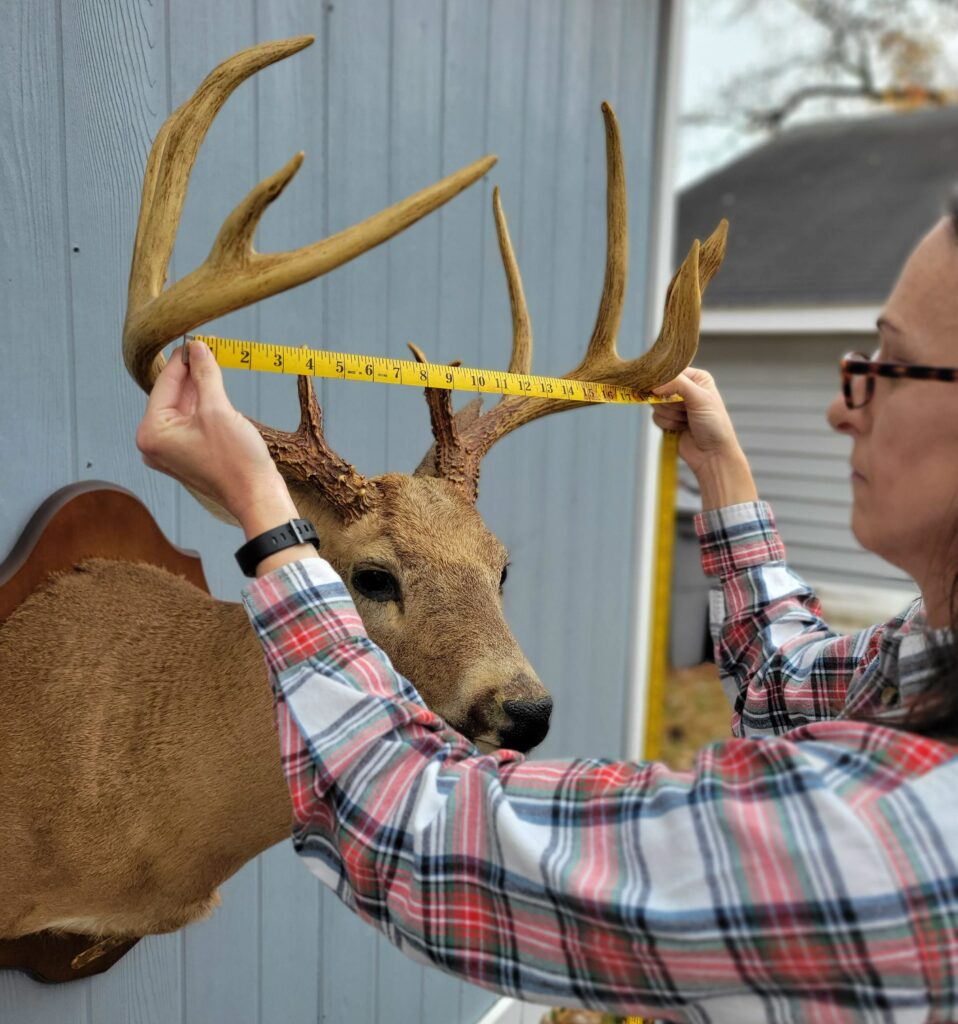
Using a tape measure, measure the widest point between the buck’s main beams.
Step 2: Measure the Main Beam
You’ll need a flexible tape measure or a piece of string for this measurement. This is the place where most scoring errors occur, so you may want to measure more than once.
Start the measurement from the lowest outside edge of the burr (the gnarled spot where the rack rises from the top of the buck’s head) and follow the outside edge of the beam all the way to the tip. A few pieces of painter’s tape will help keep the tape in place while you measure.
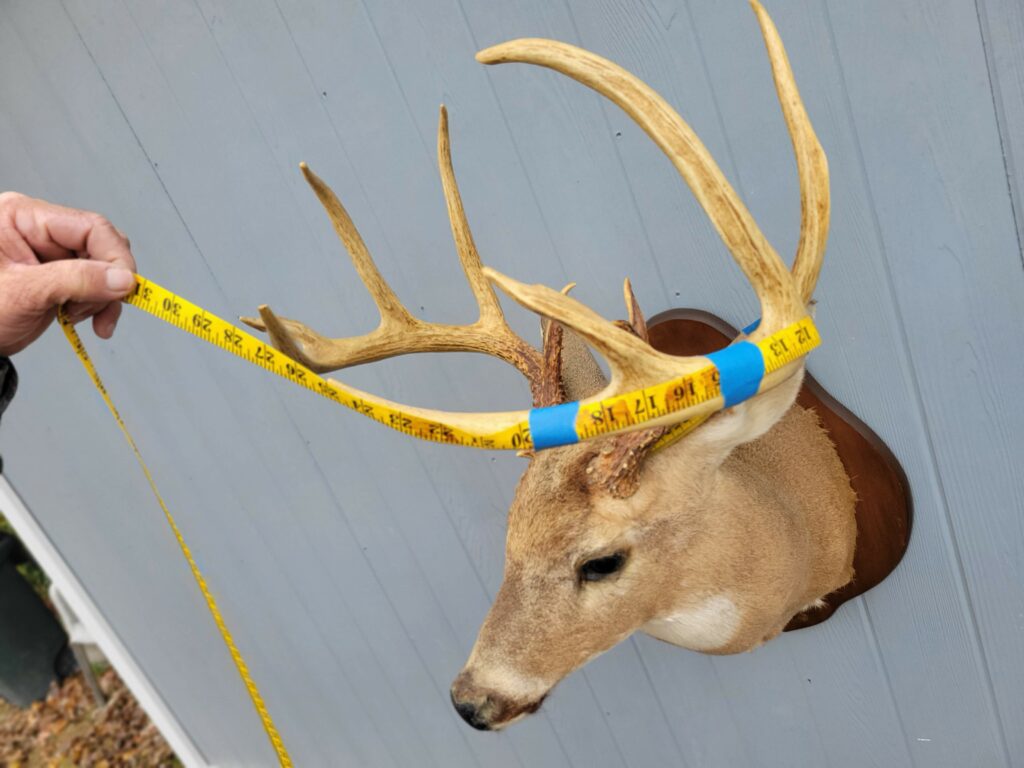
If you’re using a length of string, mark the end with a clip or marker. After you remove the string from the beam, stretch it along a flat tape measure and record the length.
Step 3: Measure Tine Length
This is where some hunters give their bucks a little too much credit. To keep your measurements honest, place a piece of painter’s tape across the base of each tine. You’ll measure the distance from the top of the tape to the tip of the tine.
The first measurement is the buck’s G1 or brow tine. G2 is the next tine and usually the longest. Continue to move down the main beam to measure G3 and so on.
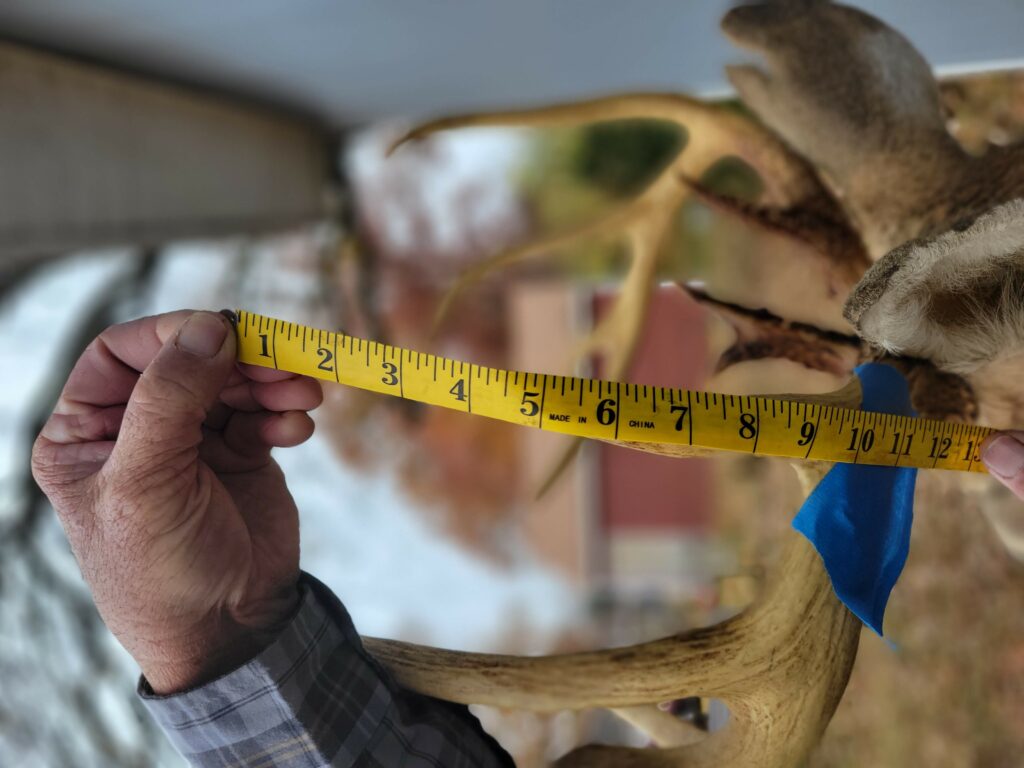
Only measure tines that grow straight from the top of the main beam. Other abnormal points will be measured and tallied later.
Step 4: Measure Mass
No matter how many tines a buck has, he still gets four circumference (or mass) measurements. These are referred to as H scores on the Boone & Crockett score sheet.
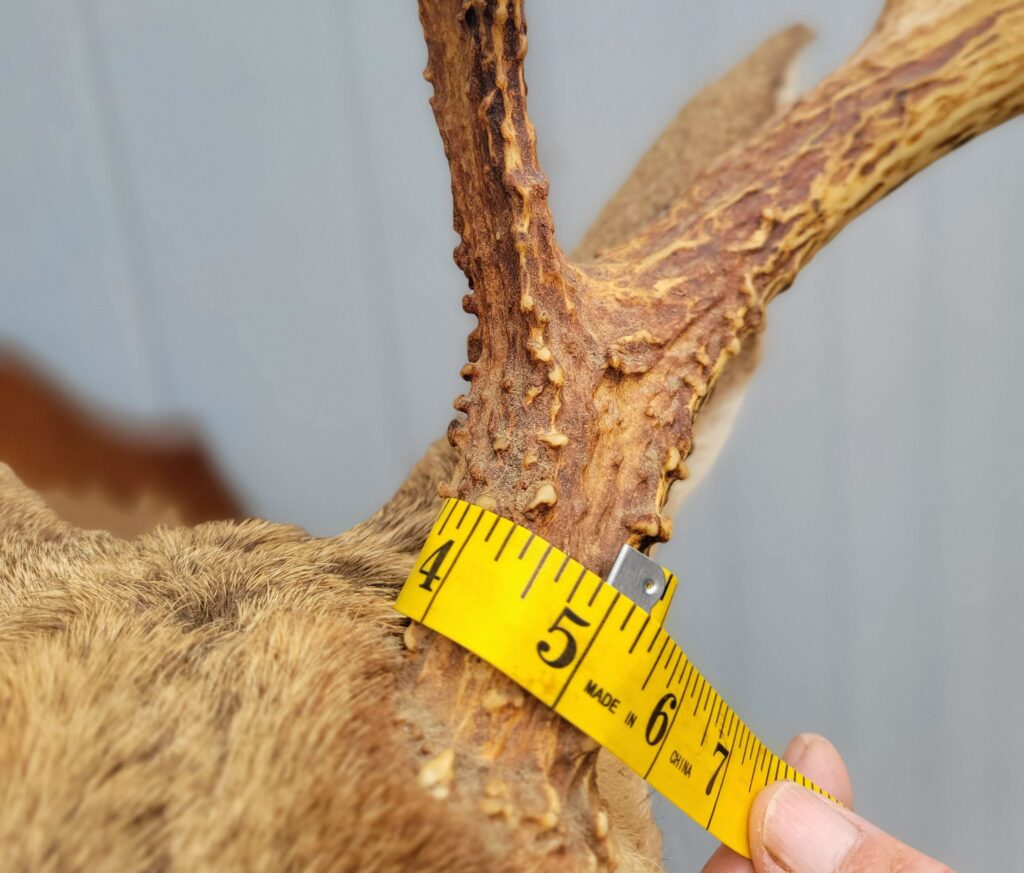
The first H measurement is taken between the burr and the brow tine.
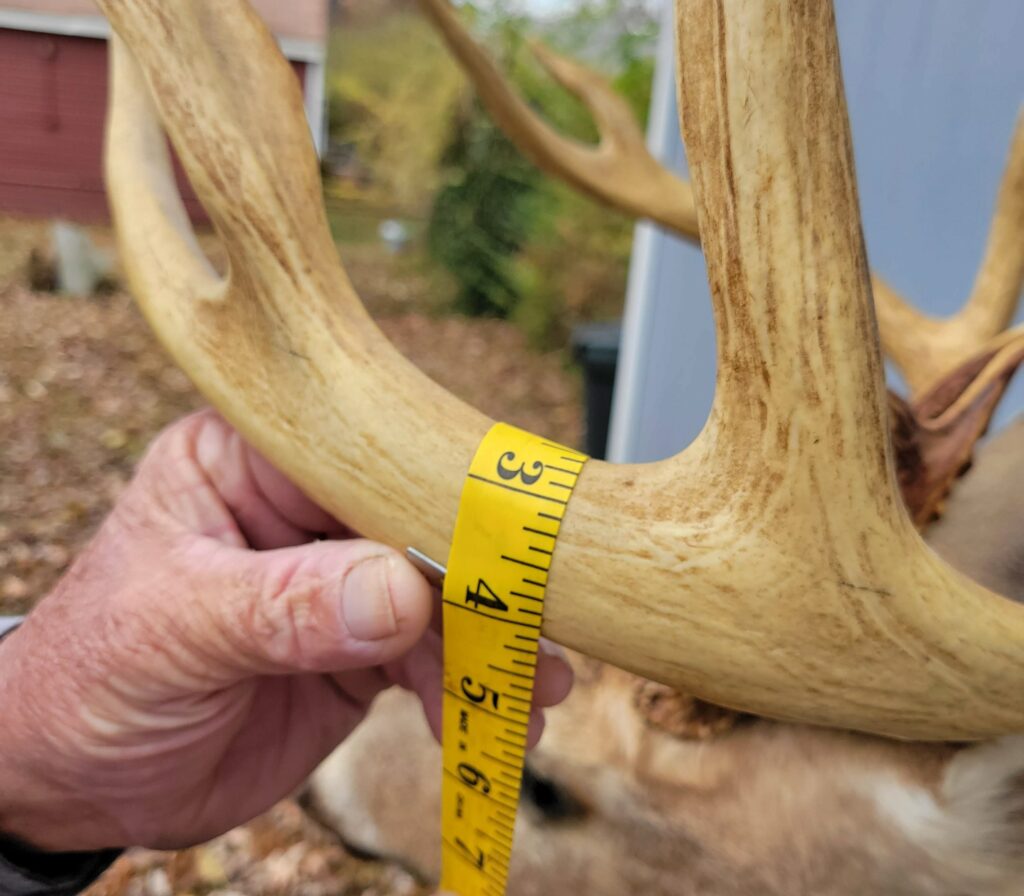
Subsequent measurements are taken at the smallest points between tines. If there is no fourth tine, take the H4 measurement halfway between the buck’s G3 and the tip of the main beam.
Step 5: Measure the Other Side
Repeat steps two through four on the opposite side.
If you’re in a hurry and just want a bragging score for hunt camp, you can skip this step and double the score from the first side. However, this only works for typical bucks with fairly symmetrical racks.
Step 6: Measure Abnormal Points
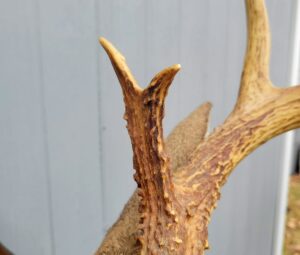
Any points that don’t protrude from the top of the main beam are considered abnormal points, including drop tines, kickers, and leaners.
To be considered an abnormal point, the protrusion must be at least one inch long. It also needs to be longer than it is wide. For example, a one-inch point that measures 1 ½ inches at the base doesn’t count.
Step 7: Do the Math
Add all the measurements together to get the buck’s gross score. For most hunters, the gross score is enough for bragging rights. Besides, trophy bucks are too hard to come by to take away from what nature has legitimately produced. Many hunters consider the gross score the count-what-God-gave-em score.
However, if you think you’ve got a buck worthy of a spot in the record books, you’ll want to tally his net score. For the net score, you subtract the abnormal points and any differences between the sides. For example, if your buck has a ten-inch G3 on the right side, but the left G3 only measures 9 ¾, you’ll subtract a quarter-inch from the gross score.
If you aren’t up for all the math, Boone & Crockett provides an online scoring calculator, which is a godsend for math-phobic hunters like me.
For an official net score, you’ll need to wait sixty days to allow the rack to dry. After the mandatory drying period, an official measurer can score your buck to see if he makes it into the pages of the record book.
Proud of your buck? Make sure you send a photo of it our way for our Brag Board!


